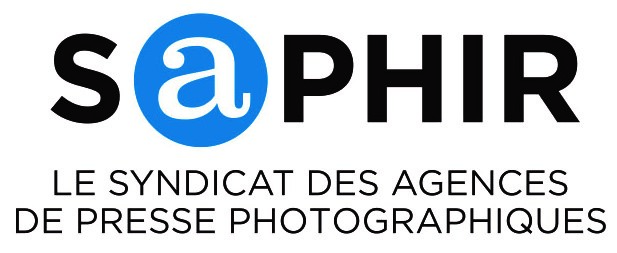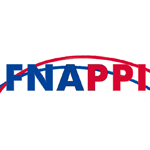Image creators could be thrown a lifeline by the EU if Article 13 is passed. However, many are keen to brand the much needed new proposal as creating limitations for Internet users. Somehow in a bid to close the online value gap for creators, some are so distressed that hashtags such as #SaveYourInternet are being brought to arms. But before getting wild with the retweet fearing the Internet is about die – let’s look how this new proposal could save photographers and other creators, and how all this scaremongering is misconceived.
The photographer’s stitch
Copyright online is a near myth that the majority of online users fail to grasp. In the digital era, content is ieasy to obtain for free, so the idea of paying for it seems like nothing but a scam. I learned this all when working with a company that supports photographers reclaiming their lost income due to unauthorised commercial usages of their work. We were inundated with absurd excuses from image users who were often annoyed or disbelieving when we told them they owed money to photographers – “but it was on Google, everything there is free” was often how the story would start. I learned that the vast majority didn’t infringe on photographers’ rights maliciously, but it was a result of a lack of education surrounding copyright online.y
On top of this, content can spread like wildfire online leaving creators at a disadvantahge when trying to enforce their rights. Worst yet is that the laws that are meant to protect them are outdated with legal loopholes that make it an uphill battle to defend their rights. Also, it can be hard for creators to size up the scale of the profit lost due to little transparency online. Another major issue faced by creators is the lack of consistency in the law that makes enforcement of copyright a challenge with diverging processes required across different jurisdictions.
How Article 13 can help
This is where Article 13 comes in. The aim of the new proposals is to guarantee that authors and rightholders receive a fair share of the value that is generated by the use of their works. The new proposals are there to try and close the value gap, unify copyright law in Europe, and remove legal loopholes. Article 13 wants to put pressure on online service providers to consider copyright so that work can be better linked to the author. As well as better transparency so that creators can be updated on where their work is going and the scale of profit. The proposals also hope that there will be better systems put in place by online service providers that allow rightholders to report infringements easily online. In all, it hopes to make the Internet a fairer marketplace for both the consumer and the creator.h
Framing the persistent loophole in the law
Another major issue that affects rightsholders online is framing of their images. This allows Internet users to share content for any purpose, anywhere online without infringing rights. No copyright attribution needed. No permission or payment required. This is essentially legalized theft. Despite the different technical method of displaying the image, on the website, it looks exactly the same. As it stands, photographers are currently powerless when it comes to protecting their images against image framing. Article 13 doesn’t plan to address this issue yet, but it’s the first major movement to better protect creators’ works and step in the right direction. However, due to this legal loophole, it could weaken the positive impact of Article 13.
The fake news
Many have branded the overdue changes as the end of the Internet, in fear that memes will evaporate and chaos will begin. This is nothing but fantastic scaremongering. There is also mention of a big mean filter created to zap the fun out of the Internet we know and love. This is nothing but fake news. However, this is being spread by companies that might have to actually start respecting copyright when Article 13 comes into effect – so I can see why they might be against the changes.
The fear of the nonexistent filter
Having done some reading, I see that the misunderstanding of the dreaded filter comes from the fact that many think that platforms will be obliged to implement an “upload filter” before the content is added to their site. They think this would be impossible to do with images. They say that besides Google, most platforms would not have the processing power to do so and, in any case, there would be no database to check content against or no register of identifiers. These fears are, however, misconceived, This is not the way visual content recognition technology works today. Companies such as COPYTRACK, ImageRights etc., who help reclaim photographer’s lost compensation, check a fingerprint database they have to check against pictures on websites. And the only reason services can work is due to the fact that photographers register for their service themselves and work together hand in hand with the companies to highlight unauthorized usages. This fingerprint based technology could easily be utilized by all types of platforms that accept user uploaded content. If photographers currently pay to use these services today, they will definitely register with the platforms for free. This will surely lead to more frictionless licensing and less take-down requests, meaning more content available to be viewed overall, all on a legal footing. More licensing also means more taxes being paid in the EU.
The death of the meme
Article 13 will not kill our beloved memes, but there is something you have to remember. A meme often involves a photographer’s work. Memes can often be used by major corporate companies in attempts to better their online relationship and persona. This is marketing. This is a commercial use. Don’t you think it’s only fair the creator of this image gets something in return? Let’s reiterate, images are protected by copyright, a licence should be required for commercial usages. Also, shock horror, creators can’t live off a lot of shares and likes from their images. Sadly, that doesn’t pay the bills.
That said, the provisions of Article 13 have built-in protections to ensure that the various exceptions to copyright are respected, meaning that if an image is used in a fair dealing manner for, say, parody or criticism, then no license will be needed. Creators are not seeking to stifle free speech or suck all fun out of the Internet, they only expect to be compensated where use of their content is not used in a fair dealing manner.
Article 13 is a result of four years of hard work. It has been reviewed by both the European Parliament and European Council. This isn’t an attempt to monopolise the Internet but rather better manage rights online, ensuring profit is funnelled to creators. When it comes to photographers, we’re not talking a value gap, but rather a complete value blockage. This needs to change. The copyright law exists to protect creators, but also to encourage them to carry on creating with the promise that their hard work will pay off. Yes, it’s a sad moment in life when you have to acknowledge that everything online isn’t free, but we have to respect these creators to allow creativity to thrive.
So, support the creative industries, support Article 13.
Author: Before coming to CEPIC, Jonathan worked at Copytrack
Photo/ meme: http://antonioguillem.com/contact/









